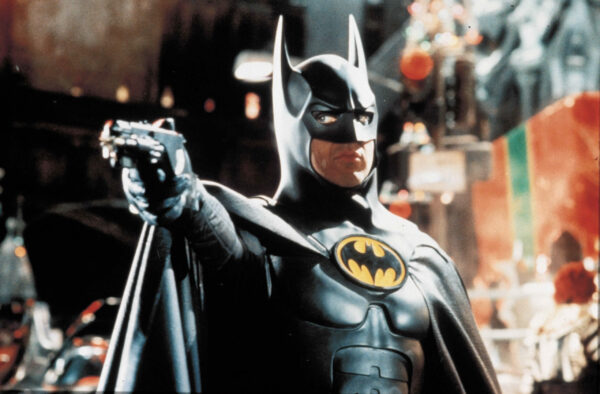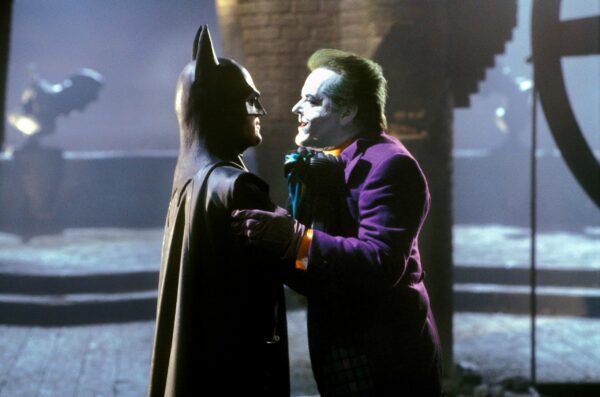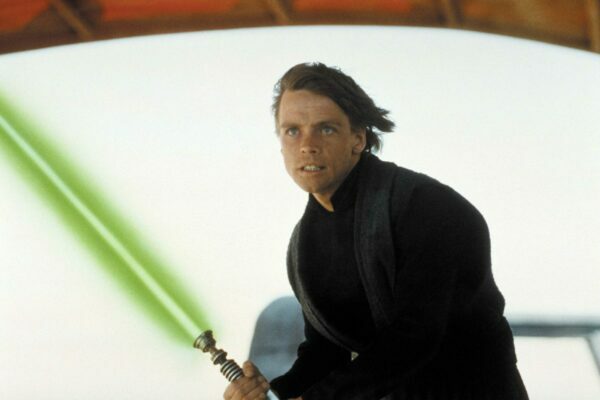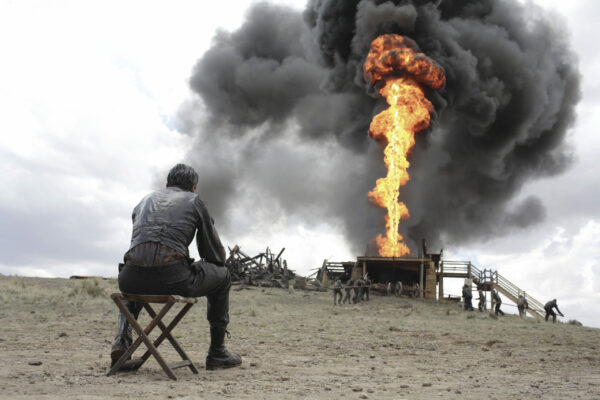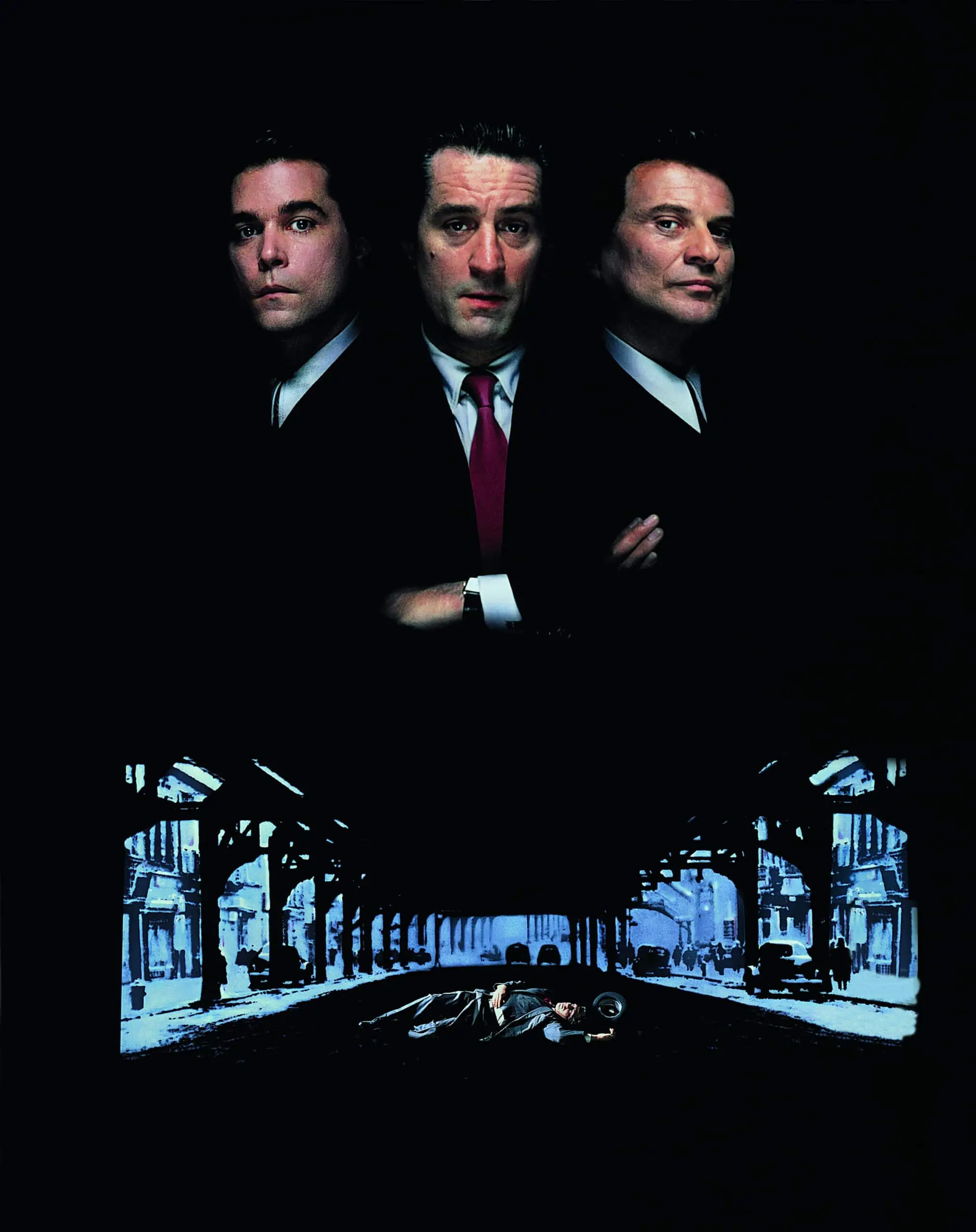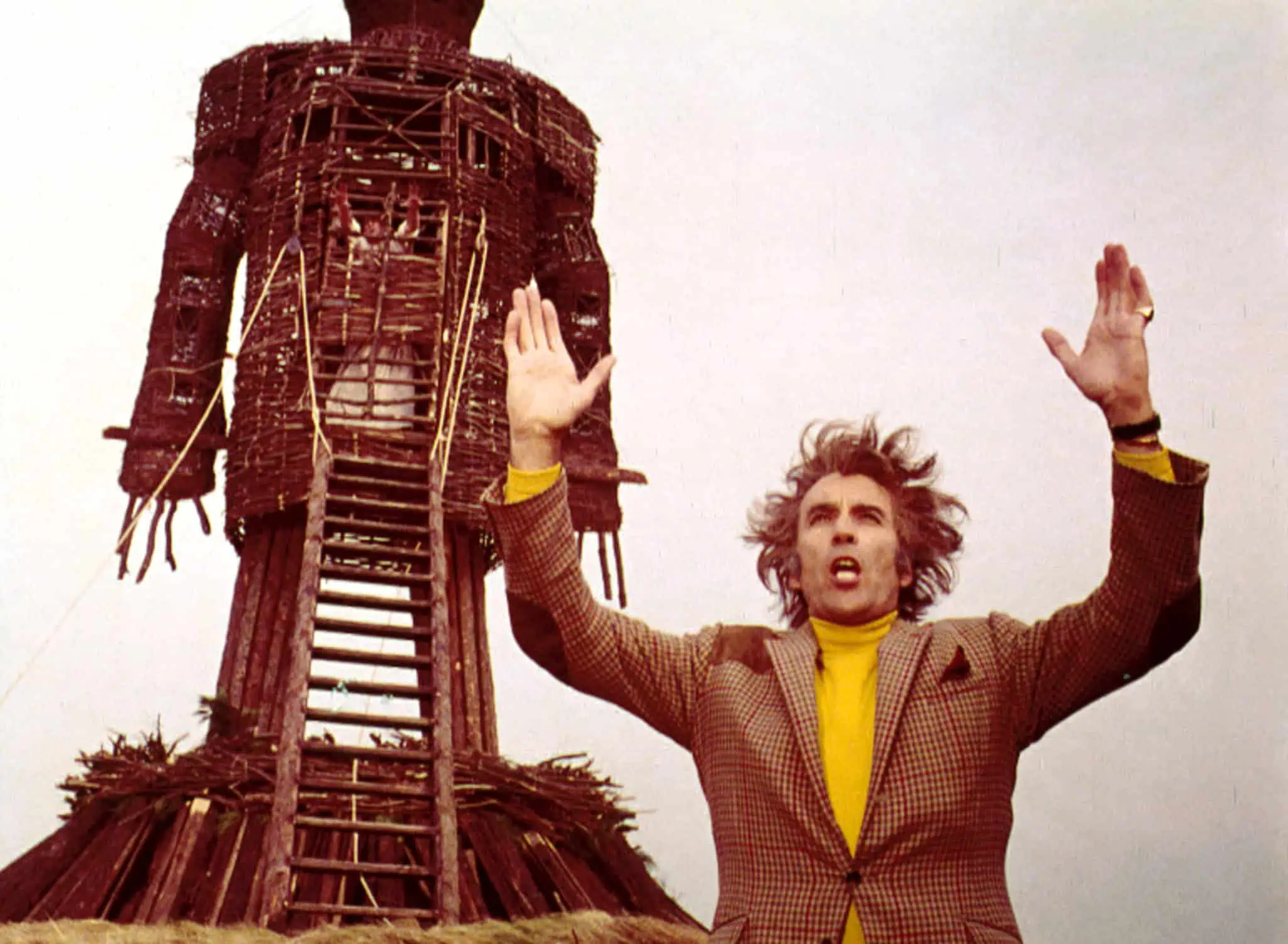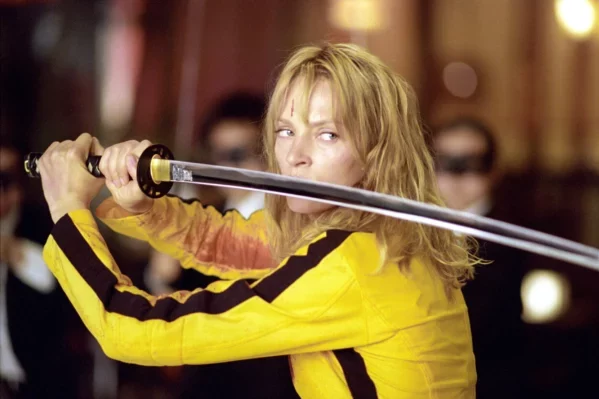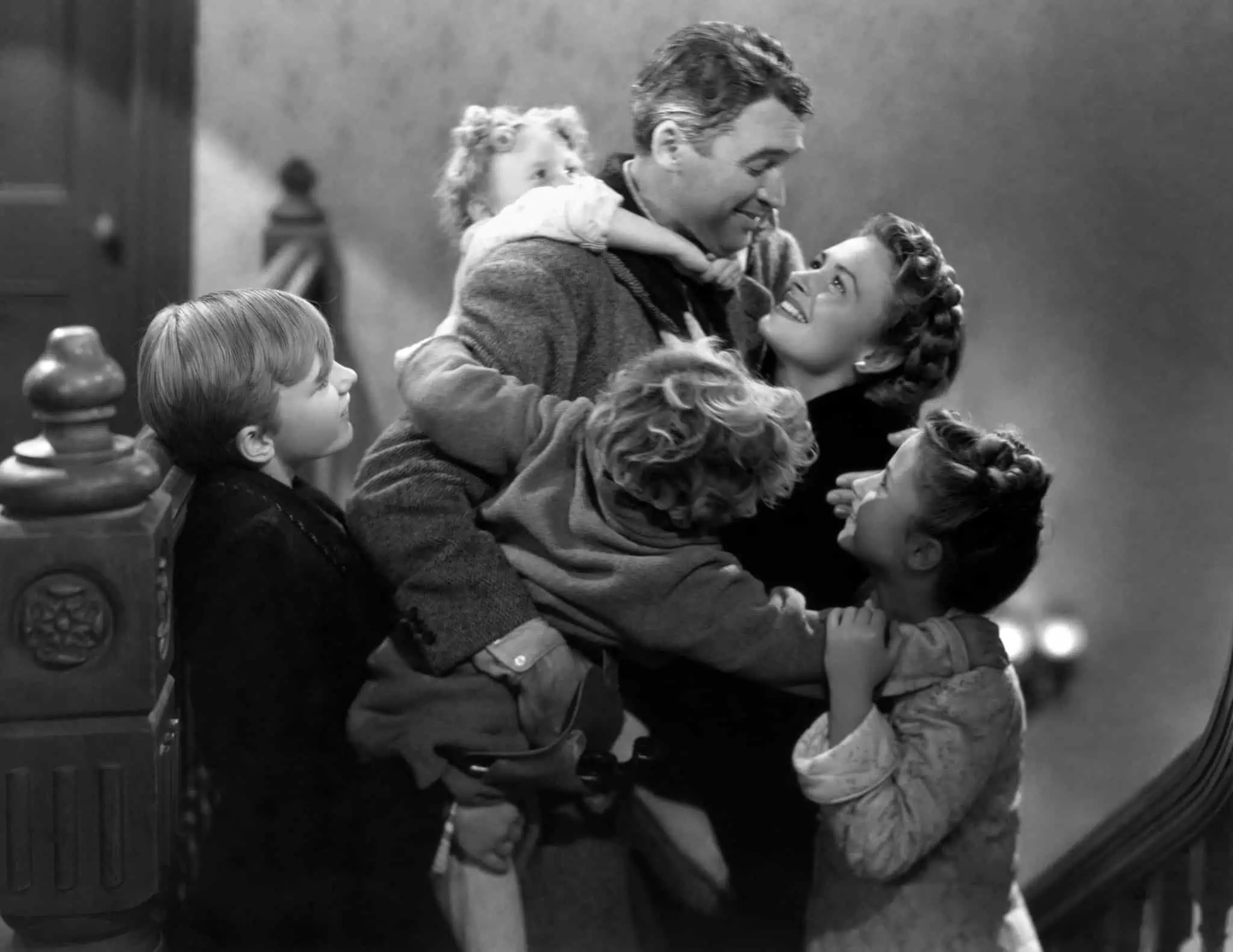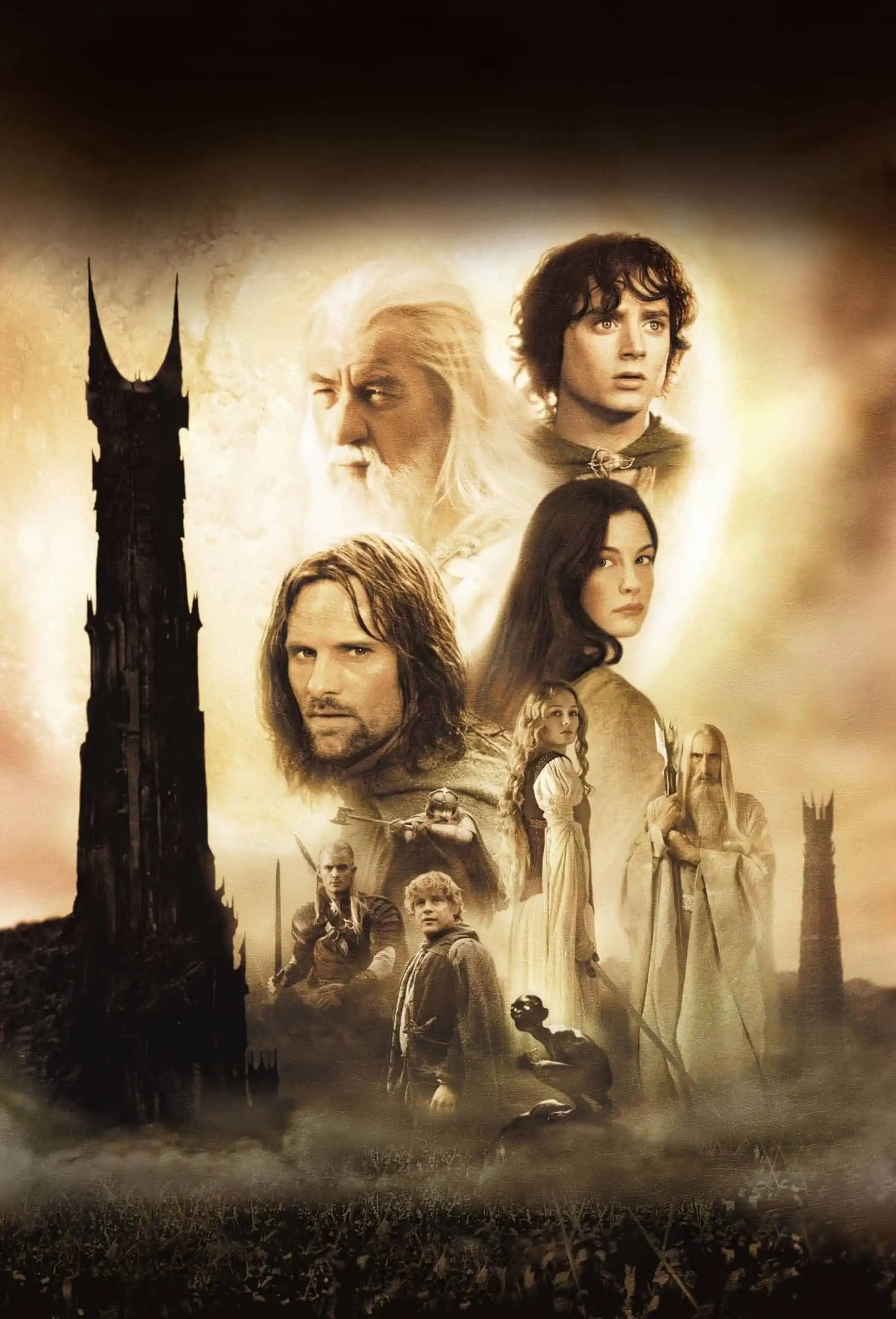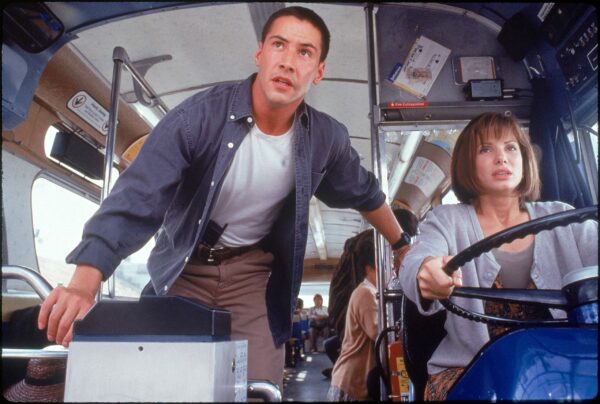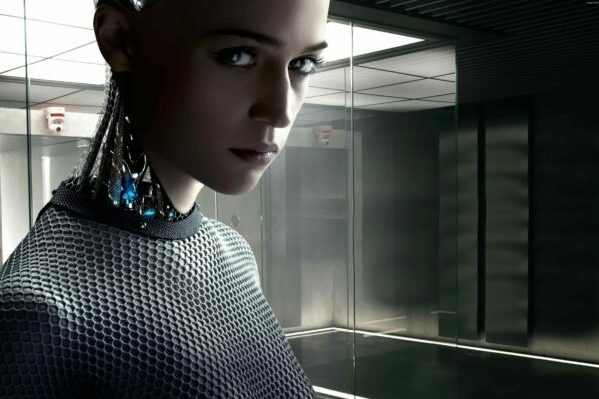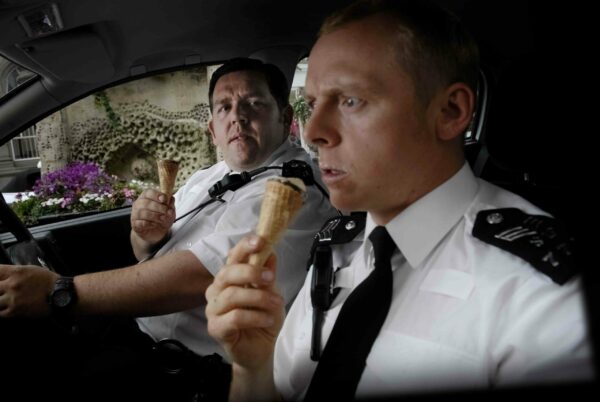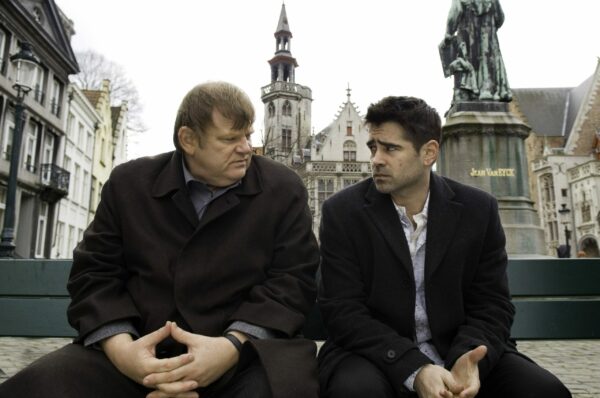
The Matrix was released in March 1999 and had an impact on Hollywood like few movies before or since. A high-concept science fiction action film written and directed by Lana and Lilly Wachowski, it is the story of Thomas Anderson, a computer hacker who discovers the world is a simulated reality, and his transformation into Neo, the saviour of mankind.
By way of 30 fascinating facts, we bring you the making of story behind one of the most influential movies of the ’90s.
1. The iconic opening motif was inspired by everyday life
One of the most identifiable images from The Matrix is the green code that runs vertically down the screen. This was designed by the production designer Simon Whitely, he based it on rain running down a window pane, and it’s made up of Japanese katakana characters that Whitely copied from a cookbook.
The iconic digital rain motif from The Matrix
2. The opening sequence took some studio heat off the Wachoswkis
The movie opens with the astonishing action set piece where Trinity is chased through buildings and across rooftops by the Agents. During production, Warners were unhappy at how slowly things were moving along and told the Wachowskis they’d step in if things didn’t pick up. So the Wachowskis and the editor, Zach Staenberg, compiled the opening sequence and finished it with temporary sound and visual effects. After the studio saw it, they were suitably impressed and didn’t bother the Wachowskis again through production.
The opening sequence to The Matrix
3. The S&M club is a real place
In the first act, Neo meets Trinity in an S&M nightclubclub. That club is a real place in Sydney, called The Hellfire Club. The Wachowskis asked the clubbers who went there to show up in their normal outfits and act as they normally would. So, the background actors are behaving and look as they would on any regular club night.
The Hellfire Club scene
4. Keanu Reeves went a bit method for the role
One of the most memorable scenes in The Matrix is the rather graphic scene when Neo is freed from the system. To prepare for this scene, Keanu Reeves lost fifteen pounds in weight and shaved his whole body to give Neo an emaciated look. And when the pod was tested, the tester suffered hypothermia so the water was heated prior to Reeves shooting the scene.
Neo is unplugged from the matrix
5. A well-known producer helped the Wachowskis get the film greenlit
Back in 1995, The Wachowskis had written Assassins, directed by Richard Donner, and starring Sly Stallone and Antonio Banderas. The producer of that film was Joel Silver (Lethal Weapon and Predator, both 1987), and the Wachowskis showed him the first draft of their new screenplay – called The Matrix.
Silver loved the screenplay, but not the Wachowskis’ insistence that they direct it themselves. They had no directing experience, so Silver suggested they cut their teeth on a smaller project first. The Wachowskis had another script – a crime thriller called Bound – which they showed to Dino De Laurentiis, the executive producer on Assassins, and he offered to finance it.
Bound wasn’t a financial success, making just $7m from a $6m budget, but Warner Bros were impressed with the film and, based on that, offered to fund The Matrix, with the Wachowskis directing.
6. The movie was filmed on location in Australia
Given the go-ahead by Warners, the Wachowskis started working out how much they would need to make the film, and their first guess was $180m. Warners balked at the figure and said they wouldn’t go above $60m. It was at this point that the filming location was switched from Hollywood to Australia, which reduced the budget down to $63m, which Warners approved.
For this reason, the sweeping cityscape shots we see in the movie are of Sydney, though the street names are taken from Chicago, which is where the Wachowskis grew up.
7. Japanese animations were a big influence
The Wachowskis took stylistic influence from a variety of diverse sources when making The Matrix, and among the biggest influences were Japanese anime and comic books:
- Katsuhiro Otomo’s classic anime Akira(1988) was a big influence with its cyberpunk look and dystopian future, all set in a place called Neo-Tokyo. And, the main character rides a cool motorbike.
- The Invisibles – a comic book series by a writer called Grant Morrison – is a story about a character referred to as “The One” whose destiny is to free humanity from a false reality.
- The Wachowskis themselves cited action/fantasy anime Ninja Scroll (1993) as a major influence.
- There’s a Japanese anime called Megazone 23 (1985) where the lead character discovers humanity is living in a simulated reality.
- The biggest influence, though, came from a Japanese manga comic-turned-animation called Ghost In The Shell (1995). Ghost In The Shell is set in the year 2029, where everyone in the world is connected by a digital network. The main character, Motoko, is a computer hacker who, when she accesses the network, gains superpowers. The Wachowskis take an action sequence or two directly from Ghost In The Shell and, when they were pitching The Matrix to Joel Silver, they showed him Ghost In The Shell and said, “we want to do this, but for real.”
Comparisons between The Matrix and Ghost In The Shell
8. The film is now called a ‘trans metaphor’
Since The Matrix was released, both Lana and Lilly Wachowskis have became transgender and transitioned from men to women. And, looking back at The Matrix, there’s some obvious subtext around trangenderism, and Lilly Wachowski has said, “The Matrix was all about the desire for transformation, but coming from a closeted point of view.”
The character of Switch, played by Belinda McClory and killed in the matrix when Cypher turns on the team, is quite androgynous-looking, and was originally going to be a man in the real world and a woman in the matrix.
Also, after Neo becomes his true self, and changes his name, Agent Smith attempts to belittle him by referring to Neo by his old name, Mr Anderson, which is a form of ‘deadnaming’.
And, back in the 90s, estrogen was literally delivered as a red pill.
Lilly Wachowki describes The Matrix as a “trans metaphor”
9. Keanu Reeves wasn’t the first choice to play Neo
Keanu Reeves was already a big star at the time he made The Matrix, but wasn’t the Wachowkis’ original pick to play the lead role.
Johnny Depp was the Wachowskis first choice, but he passed. Tom Cruise, Leonardo DiCaprio, Mark Wahlberg, Ewan McGregor, Nicholas Cage and Brad Pitt also said ‘no’ to playing Neo. Lou Diamond Phillips was sent the script and turned it down when his agent said, “it’s a guaranteed flop”. And, at one point, apparently, David Schwimmer was in the running to play Neo.
And Lorenzo di Bonaventura, who was an executive at Warners, said: “So many people turned it down, we were getting desperate. We went to Sandra Bullock and said ‘We’ll change Neo to a girl.’ We sent her the script to see if she was interested but it wasn’t something for her at the time.”
And, most famously, the role of Neo was offered to, and turned down by, Will Smith. One of the biggest movie stars in the world at the time, he turned the Wachowskis down to make Wild Wild West (1999). He’s since said, “I’m not proud of it.”
10. Keanu Reeves had major surgery just before filming
Just before production started, Reeves had underwent back surgery because a fusion of his spine had started to cause paralysis in his legs. He then had to spend 4 months in training for the fight sequences for The Matrix, but found kicking really difficult. So, in the film, in most of Reeves’ fights he punches but doesn’t kick much.
11. Reeves’ generosity on the set has become movie legend
For starring in The Matrix, Keanu Reeves made $10m up front which, added to his back end share of the profits, made $35m in total. He donated 70% of this – that’s $24.5m! – to leukemia research (Reeves’ sister had leukemia around the time). Also, when filming The Matrix’ sequels, Reeves gave each member of the special effects and costume teams $1m each. By the end of The Matrix Trilogy, he’d given away $75m.
There was another story appeared on Reddit after The Matrix was released about a man who built movie sets for a living, and worked on The Matrix. This crew member was having family debt trouble. Keanu Reeves heard about it, found out how much the crew member needed, and gave him a $20,000 Christmas bonus.
Keanu Reeves himself has said: “Money is the last thing I think about. I could live on what I’ve already made for centuries, so would rather give it to others.”
12. Carrie-Anne Moss wasn’t the Wachowskis’ first choice, either
At this point in her career, Carrie-Anne Moss was largely unknown as an actress. She had mostly been seen on television and there were lots of other actresses up for the part of Trinity.
Marisa Tomei, Salma Hayek, Catherine Zeta-Jones, Jennifer Lopez, Angelina Jolie, Drew Barrymore, Gillian Anderson, Uma Thurman, Lucy Liu, Elizabeth Hurley, Madonna, and Janet Jackson all turned the role down.
And Jada Pinkett Smith auditioned for the part, and screen-tested with Keanu Reeves, but the Wachowskis thought they had no chemistry together. She was later cast as Niobe in The Matrix Reloaded, though.
13. Moss injured herself on the set
Like Keanu Reeves, Carrie-Anne Moss had to undergo months of training for the martial arts sequences before production started. She wanted to perform as many of the stunts as she could, so learned martial arts and also extensive wire training. It’s Moss who we see performing the stunts in almost all of her action scenes but, filming the opening sequence, she twisted her ankle and injured herself. However, she was worried the Wachowskis would recast her so didn’t tell anyone she was hurt until after filming was competed.
14. Morpheus could have ben very different
Laurence Fishburne was already well known before The Matrix, having appeared in films like Apocalypse Now (1979), The Color Purple (1985), and Boyz N The Hood (1991). And he’d been Oscar-nominated for playing Ike Turner in the Tina Turner biopic What’s Love Got To Do With It (1993).
But, just like with casting Neo and Trinity, there were lots of other people linked with the role before the part of Morpheus was cast.
Samuel L. Jackson, Gary Oldman, Morgan Freeman, Denzel Washington, Anthony Hopkins, and Robert De Niro were all considered, and the role was offered to – and turned down by – Russell Crowe, Chow Yun Fat, and Sean Connery.
Crowe said he couldn’t get past page 42 of the screenplay, and Connery turned it down because he didn’t understand the script. We think it turned out pretty well with Laurence Fishburne, though.
15. Morpheus was inspired by a character created by somebody else
In Greek mythology, Morpheus is the god of dreams, but the Wachowskis actually named him after the Morpheus in the Sandman comic book series, written by Neil Gaiman. And they asked Fishburne to base his performance on that character.
And, in terms of looks, he’s very much like King Mob – the mentor-figure in The Invisibles.

King Mob, from Grant Morrison’s The Invisibles
16. Hugo Weaving wasn’t a shoo-in for the part of Agent Smith
Before The Matrix, Hugo Weaving’s most famous role was probably Tick in Australian road comedy Priscilla: Queen Of The Desert (1994), so he was a surprise casting choice as Agent Smith. Before Weaving was cast, though, the Wachowskis wanted Jean Reno as Smith. Most well-known for playing the title role in Leon (1994), Reno turned the part down to appear in Godzilla (1998). Luckily, the Wachowskis had seen Hugo Weaving in Australian romantic-comedy-drama Proof (1991) and thought he was a perfect fit for Smith.
17. An injury to Hugo Weaving almost halted production
On the first day of shooting, Hugo Weaving injured his leg performing a stunt. The injury turned out to be a polyp that had to be surgically removed. For a while, the Wachowskis thought they might have to recast the role but managed to move the schedule around to accommodate Weaving.
Also, when he was developing the character of Smith, Weaving didn’t want him to sound either human or robotic and he was actually influenced by the Wachowskis themselves, as they had deep voices.
18. Twins were used very cleverly
When Morpheus trains Neo, they head into the construct, a smaller duplicte of the matrix. To show this, the Wachowskis cast extras who were twins. So, in the scene below, if you pay attention to the passers by, it seems like we see the same people more than once because the construct duplicates its characters as it isn’t as enormous as the matrix.
We see duplicate sailors, police officers, and business people in the scene above
19. The martial arts choreographer was an industry legend
The martial arts fight sequences play a big part in the success of The Matrix, and integral to its unique identity. The Martial Arts Choreographer on the film was Woo-Ping Yuen, a legendary Hong Kong stunt coordinator. The Wachowskis hired him because of his work on Hong Kong kung fu film Fist Of Legend in 1994.
Woo-Ping Yuen actually didn’t want to work on the film at first. After the Wachowskis sent him the script, Yuen asked for a huge fee to try and put them off, which failed. So he said he’d only work on The Matrix if he had complete control of the fights, and that he was allowed to train the actors for four months prior to shooting. The Wachowskis agreed to that as well, so Yuen came on board and created some of the most memorable martial arts sequences seen in a Hollywood film.
Woo-Ping Yuen did such a good job that he worked on other big Hollywood movies in the following years. He returned for The Matrix Reloaded (2003) and The Matrix Revolutions (2003), and Quentin Tarantino hired him to work on Kill Bill Vol.1 (2003) and Kill Bill Vol. 2 (2004).
Creating the kung fu scenes on The Matrix
20. The Wachowskis wrote the film as a comic book too
The Wachowskis started presenting The Matrix script to studios in about 1995 but the problem they had was that most executives didn’t understand it. They wrote 14 drafts of the screenplay, which made the story clearer, but studios still had trouble visualising how the film would look on the screen.
So, using their comic book contacts, the Wachowskis hired three comic book illustrators: Steve Skroce (who had worked on Spider-Man and the X-Men), Geoff Darrow (who drew a series called Hard Boiled), and Tani Kunitake (who had drawn Batman). Together, they created a 600-page comic book that esentially worked as a storyboard for The Matrix.
The storyboards had the desired affect because, as soon as Warners saw them, they greenlit The Matrix.
The original storyboards for the helicopter action sequence
21. There are some classic literature influences in the film
There’s references to a lot of legendary fiction throughout the film, none more so than the Alice In Wonderland stories, written by Lewis Carroll:
- Neo follows a white rabbit tattoo to meet Trinity.
- Morpheus refers to the matrix as “wonderland”.
- And, when Neo is on the way to meet Morpheus, the camera captures a black-and-white checkered tile floor. In Through The Looking Glass, Alice has to make her way across a chessboard as a pawn.

Like Alice, Neo makes his way across a ‘chess board’
22. An acclaimed French philosopher was a major inspiration
A much more diverse source of inspiration for The Matrix was a book called Simulacra and Simulation, written by a French philosopher called Jean Baudrillard. This book explores the concept of simulation and hyperreality, and the Wachowskis asked all of the main cast members to read Baudrillard’s book before filming started. Also, we see Simulacra and Simulation in the first act of the film; Neo hides his illegal computer files in a copy of it.
Also, in the construct when Morpheus says to Neo, “Welcome to the desert of the real” – that’s a phrase from Simulacra and Simulation.
However, Jean Baudrilard himself didn’t like The Matrix. He called it hypocritical and said the Wachowskis missed his point. There’s a quote where Baudrillard said: “The Matrix is the kind of film about the matrix that the matrix would produce.”
Neo hides his computer files inside Simulacra and Simulation
23. The Wachowskis borrowed from another acclaimed science fiction novel
The Wachowskis were also influenced by a book called Neuromancer, written by William Gibson. Neuromancer is cyberpunk in style, and the main character is a loner computer hacker who learns how to enter a digital world and alter reality. In Neuromancer, the digital world is called the matrix, and the people who want to break free from it live in a place called Zion.

Neuromancer by William Gibson was a big influence on the Wachowskis
24. Ancient Greek philosophy was an influence
The Matrix also draws from the ancient Greek philospoher Plato, and his Allegory of the Cave. In his allegory, Plato likened uneducated people to being chained up in a cave. A fire glows behind them and they see the shadows of objects passing along the wall, but not the actual objects themselves. These people perceive the shadows as reality because they’ve never seen the actual objects. They are prisoners to this false perception of reality. So the Wachowskis ask the same question Plato does: “How do we know what our reality really is?”
Also, part of Plato’s allegory is that when one of the prisoners leaves the cage his eyes hurt and have to adjust because he’s never seen sunlight. This is reflected in The Matrix when, after Neo is unplugged from the matrix he says to Morpheus, “why do my eyes hurt?” and Morpheus replies, “Because you’ve never used them before.”
Plato’s Allegory of the Cave, narrated by Orson Welles
25. The complexity of the music in the film is extraordinary
The composer of the music on The Matrix was Don Davis. He’d worked on features before, but The Matrix was his first of any major note. The most recognisable part of Don Davis’ music is possibly the leitmotif that plays at the start of every film – the blast of strings and horns we hear. It rises in pitch across the three first films as well, which is a nice touch.
However, this barely scratches the surface on the level of of complexity of The Matrix’ music. It’s too too detailed to go in-depth in this article, but the below video is a fantastic essay on the musical theory Don Davis applied to his compositions to reflect the narrative and themes of the film.
Decoding the music of The Matrix video essay
26. Everything is green
On top of the stunning cinematography provided by Director of Photography Bill Pope, colour tints were used to enhance the story and signify locations:
- Any scenes shot in the matrix have a green tint, and the blue is removed entirely.
- Scenes in the real world have a blue tint, and feature no green. Except for the green matrix code on the computer screens.
- And scenes in the construct, like in the training simulation, which is neither the real world nor the matrix, have a yellow tint.
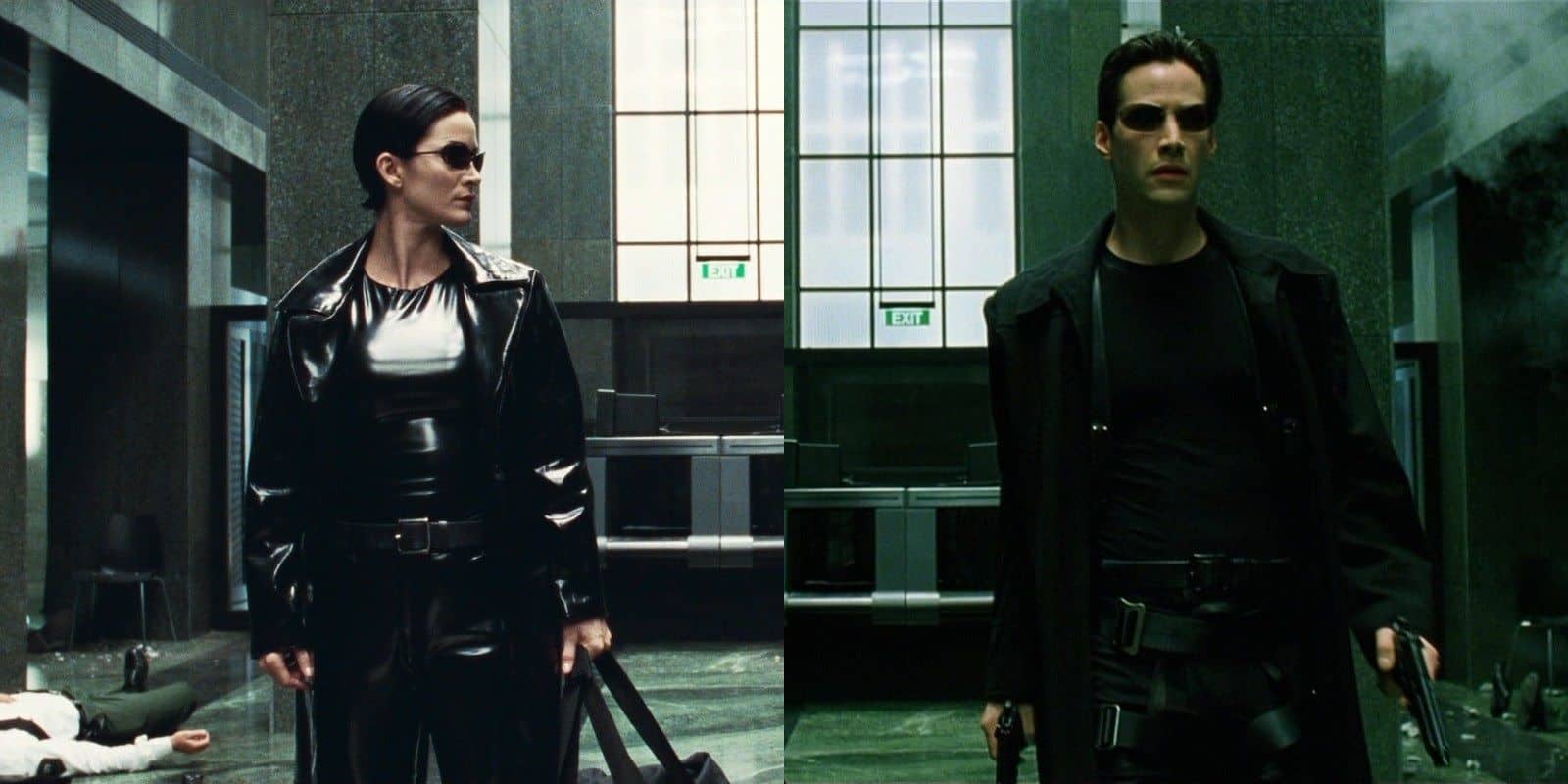
Before and after the colour adjustments
27. The special effects were groundbreaking
There’s a lot of great practical effects work on The Matrix – mostly done with wires and scale models but, when we discuss the special effects of The Matrix, it’s ‘bullet time’ which most often comes up.
The Wachowskis knew how they wanted the bullet time moments to look and, at first, special effects supervisor John Gaeta and Bill Pope wanted to do it the old-fashioned way. They created a dolly and basically had a rocket strapped to a camera that would fire it round the actors at huge speeds. The tests failed, though, so they opted for CGI instead. How bullet time works is that multiple cameras are positioned around the actors that all shoot the action at the same time. CGI is then used to fluidly stitch the different shots together and, to make it flow as fluently as possible, the cameras had to capture 12,000 frames per second instead of the usual 24 frames per second.
Filming the bullet time sequences
28. The Matrix wasn’t the first film to use bullet time
The term ‘bullet time’ came from The Matrix but John Gaeta never claimed to have invented it. An early version of it was in a 1985 music video by a rock band called Accept; Michel Gondry developed it in a Smirnoff TV advert in 1996, then Lost in Space in 1998, and Wing Commander in 1999 both used versions of bullet time before The Matrix.
Michel Gondry’s 1996 Smirnoff ad, featuring bullet time
29. The film broke ground with its digital marketing too
The question, “What is The Matrix?” featured across all trailers and promotional literature for the film to create interest and intrigue inthe premise. The Matrix was released in the relatively early days of the internet and was one of the first films to go all in with digital marketing. A website called whatisthematrix.com was launched, and basically left cryptic clues about what the matrix was. The website was a huge success and kickstarted the digital arena as a valuable marketing asset for the movie industry.
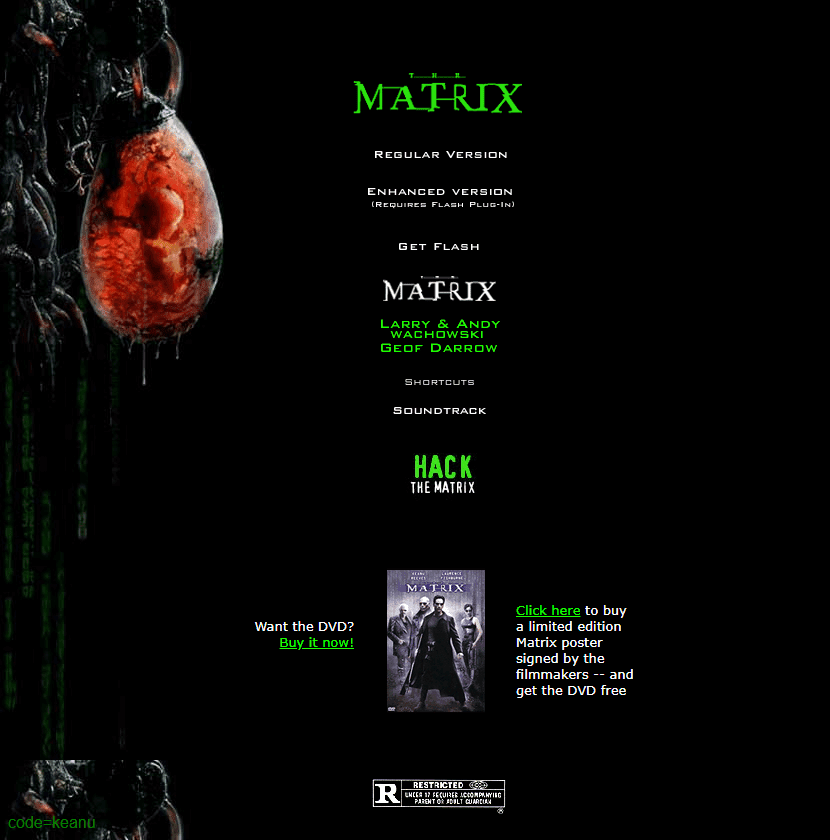
whatisthematrix.com from 1999
30. The Matrix was pretty much an instant classic
The Matrix is acclaimed as a science fiction and action classic nowadays and, looking back at how it was received on its release, it was pretty much that way right from the start. On a budget of $63m, The Matrix grossed $466.6m at the box office – a huge return.
Acclaimed U.S. critic Roger Ebert reviewed The Matrix as 3 out of 4, and said:
“The Matrix is a visually dazzling cyberadventure, full of kinetic excitement, but it retreats to formula just when it’s getting interesting. It’s kind of a letdown when a movie begins by redefining the nature of reality, and ends with a shoot-out.”
Empire Magazine gave The Matrix 5 stars out of 5. And they said:
“The deliciously inventive Wachowskis have delivered the syntax for a new kind of movie: technically mind-blowing, style merged perfectly with content and just so damn cool.”
However, Jonathan Rosenbaum of the Chicago Reader reviewed the film negatively, and called it, “simpleminded fun for roughly the first hour, until the movie becomes overwhelmed by its many sources… There’s not much humor to keep it all life-size, and by the final stretch it’s become bloated, mechanical, and tiresome.”
Some negativity from film critics but, from filmmakers, it was pretty much universal acclaim for The Matrix.
Darren Aronofsky said, “I walked out of The Matrix and thought, ‘What kind of science fiction movie can people make now?’ The Wachowskis basically took all the great sci-fi ideas of the 20th century and rolled them into a delicious pop culture sandwich that everyone on the planet devoured.”
Quentin Tarantino called seeing The Matrix on opening night, “a mindblowing experience,” and put it in his top 20 movies between 1992 and 2009.
And James Cameron, who knows a thing or two about action sci fi, called The Matrix, “one of the most profoundly fresh science fiction films ever made”.
So, there you have it – the making of a science fiction and action classic by way of 30 mid-blowing and interesting facts. Please share on your social platforms, and listen to our podcast on The Matrix, here.


